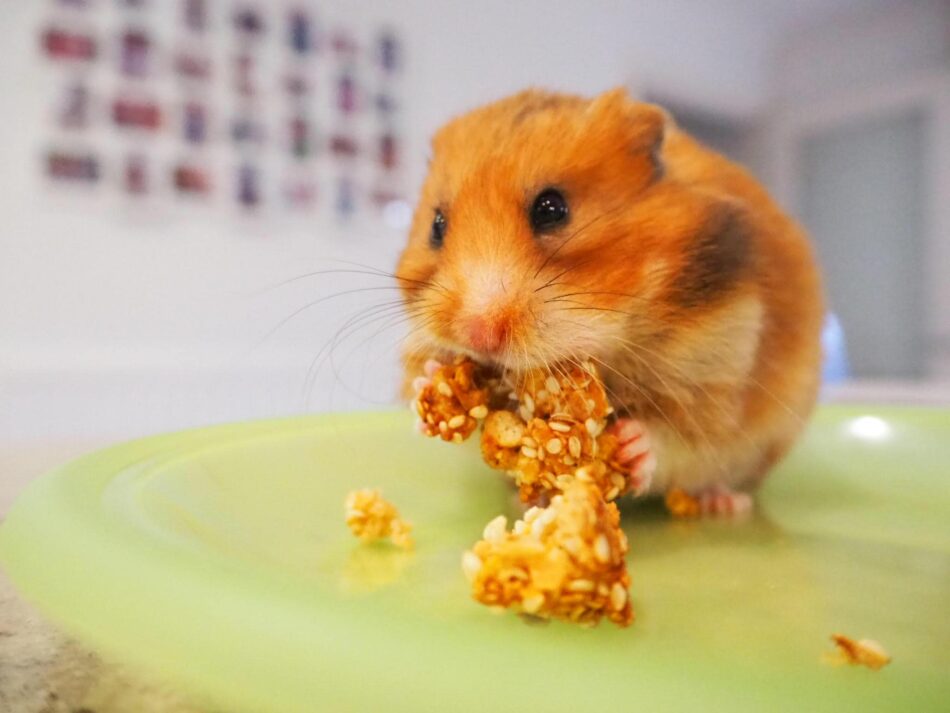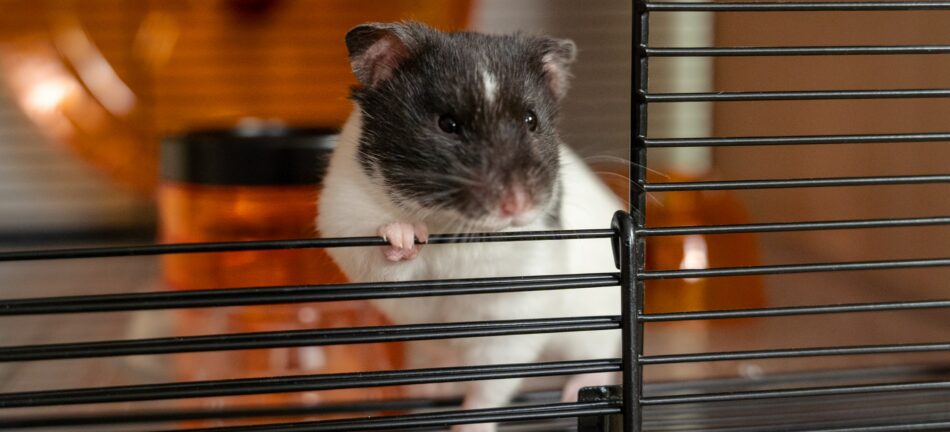9 things you might not know about hamster cheek pouches

Hamsters are known for adorably stuffing food in their cheeks, giving them a puffy, caught-with-their-paws-in-the-cookie-jar look. But what exactly enables them to carry food in their mouths, and what do they do with it once it’s there? We’ll share 9 things you may not know about hamster cheek pouches so that you can understand your furry friend’s peculiar behavior a little bit better.
9 things you might not know about hamster cheek pouches
All hamsters have cheek pouches, but what are they for, and how do they work? Let’s dive into those deep cheek pouches — if there’s still room!
Cheek pouches are part of hamster anatomy
What we call a “cheek pouch” is actually expandable parts of your hamster’s oral mucosa, or the lining of the cheeks. When they’re empty, your hamster’s cheek pouch looks like a small, deflated balloon. Once your hamster starts filling their pouches, they can expand all the way back to their shoulders. In fact, a hamster can stuff up to 20% of their body weight into their cheek pouches. That would be like a 120 lb human carrying an extra 24 lbs worth of food around in their mouth.
They act like a built-in lunchbox
The main purpose of their cheek pouches is to carry food. In the wild, hamsters use their cheeks to carry food back to their home to enjoy it in a safe, quiet place. Domesticated hamsters exhibit the same behavior. You may observe your hamster depositing its proffered cheek pouch items in their hideout, play tunnels, or hamster sleeping area.
Food to-go
Hamsters can both run and eat with their cheeks full. In fact, hamsters can still eat when their cheek pouches are full. They’ll stuff their cheeks full, then eat some bites before taking their packed food back to their destination. And, even with all of the extra weight of full cheek pouches, hamsters aren’t slowed down by their to-go meals.
Dry storage
Here’s a fun fact: hamsters don’t release saliva into their cheek pouches. This keeps their packed lunches nice and dry and prevents bacteria from building up in their mouths. Hamster dentists are in short supply, so keeping their teeth free from moist food is important for overall oral hygiene.
Backup baby carrier
This isn’t something you’ll likely see in your domesticated hamster, but female hamsters can actually secure their babies in their cheek pouches to make a quick getaway, or to serve as an emergency hiding spot. Packing their babies in this way is only used as a last resort when their nest is being threatened.
Taking out the trash
Hamsters are actually pretty tidy creatures that don’t appreciate spoiled food in their pantries. They’ll use their pouches to stuff and carry spoiled food away from their fresh goods. This too is not very common with domesticated hamsters that have a clean cage, so having an easy-to-clean hamster cage will aid your furry friend in their housekeeping endeavors.
A wheelbarrow or shopping cart
How would you like to carry your latest decor or bedding finds home in your mouth? That’s exactly how hamsters sometimes use their cheek pouches — as vessels to carry bedding and nesting or building materials to the home.
Playing favorites
Some hamsters favor one side of their mouth over the other, while some will happily stuff both cheeks full. Watch to see if your hamster is a left or right-stuffer, or an ambi-stuffer.
A potential problem site
It’s possible for cheek pouches to be punctured or have abscesses form in them. You should keep an eye on your hamster’s overall health, with special attention on their mouths. If you notice any lumps that linger for more than a day, contact your veterinarian.
Omlet and your hamsters
Hamsters are amazing animals that are a pleasure to share a home with. Their quirky but lovable personalities are what inspired the Qute hamster cage. We wanted hamsters to have their ideal home, but one that was easy for their owners to keep clean while looking great in any room of the house. With a Qute hamster cage by Omlet, you’ll be able to see your hamster stuff their cheeks along with all of their other adorable behaviors up close and personally.
This entry was posted in Hamsters
